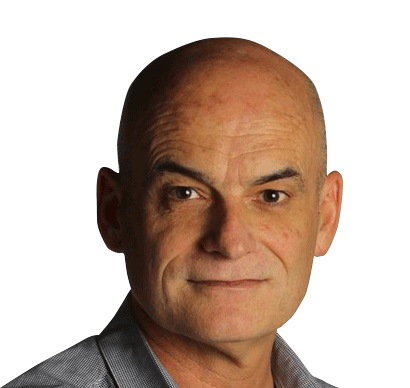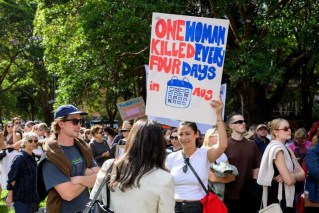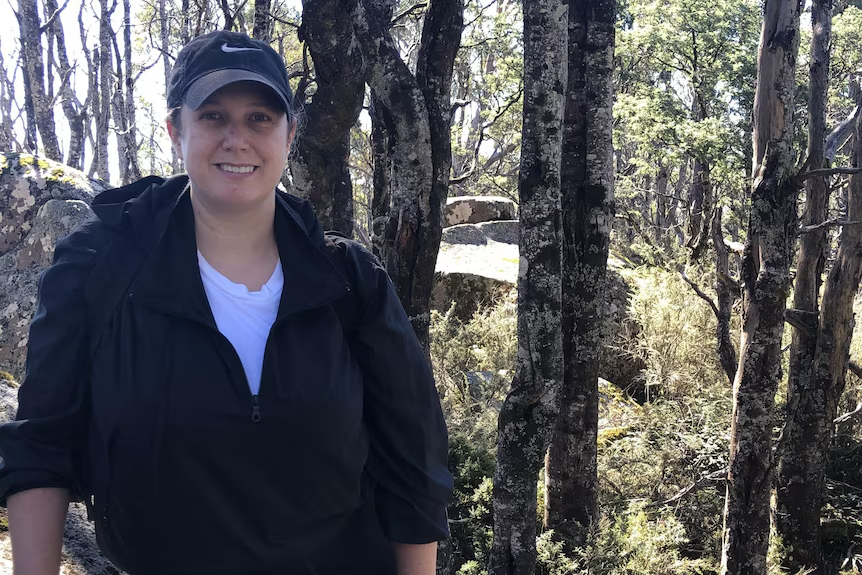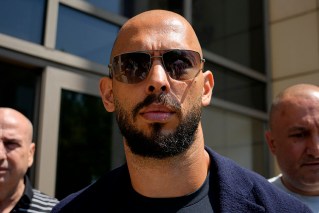Garry Linnell: Australia should bring back the death penalty


The Trump administration reinstated the death penalty in July 2019, leading to a spate of executions. Photo: Getty
His face was so hideous it could only have been forged in Hell.
But it was somehow appropriate. Robert Howard’s job was to send his victims to that very same place.
It was 140 years ago this week that Howard tied a rope around the neck of Andrew George Scott – the bushranger better known as Captain Moonlite – and sent him plummeting to his death.
The crowd heard the trapdoor open and never forgot the noise of Moonlite’s neck snapping, or the quiet creaking of the rope as his body swayed beneath the gallows.
You can almost hear its macabre echoes today.
But you’ll have to listen very closely because we don’t like talking about capital punishment any more.
Robert Howard was better known as ‘Nosey Bob’.
For years he had been a well-off driver of a Hansom cab – a small cart pulled by a horse that carried passengers around the city.
But business soon dried up when a horse unleashed a kick that took out his nose.
After that, few people wanted to be escorted around Sydney by a large man with a gaping cavity in the middle of his face. So Nosey Bob was forced to take on a role few others desired.
Already an outcast because of his gruesome features, Bob became NSW’s state executioner and an absolute pariah.
Publicans would smash any beer glass he drank from so the lips of others would not be tainted.
Pedestrians would cross the street if they saw him coming.
There was a growing movement in colonial Australia against the death penalty.
Tens of thousands had marched solemnly through Sydney’s streets six months earlier and signed a 60-metre-long petition in an unsuccessful attempt to stop Bob from hanging a young Aboriginal man convicted on flimsy evidence of rape.
Bob was the Grim Reaper who represented everything that was wrong with capital punishment.
A newspaper of the time said he had “arms like a gorilla, a flat face without a nose, and huge feet and presented a spectacle to be seen nowhere else out of Hades”.
Poor Bob. If he was around now a social media fundraising campaign would surely raise enough to fit him out with a decent prosthetic nose.
But he would quickly discover that not much else has changed.
Those brave enough to advocate the death penalty in polite company these days quickly learn what life must have been like for old Nosey Bob.
Capital punishment is the debate we’re no longer allowed to have.
Admit that you support putting someone to death if they have committed a particularly heinous crime and chances are you will be shouted down and contemptuously dismissed as a primitive from another era.
No politician with any sense will dare embrace the issue for fear of being deluged by a flood of criticism from lawyers and human rights activists.
So those of us – and polls have consistently shown a silent majority of Australians firmly believe in executing those guilty of appalling acts – are left to keep our opinions to ourselves.
It’s a topic tinged with hypocrisy and double standards.
The US Supreme Court is expected to rule this year on a push by the Trump administration to resume the execution of federal prisoners after a hiatus of almost two decades.
So far the arguments trotted out against it have produced nothing but the usual lectures about the sanctity of human life, as well as the possibility of executing those who have been wrongfully convicted.
The second argument is far more valid than the first.
Dozens of prisoners on death row – and several already fried in the electric chair or executed by lethal injection – have been shown to be innocent after courageous work by campaigners using new DNA sampling methods.
But using that as a reason for abolishing the death penalty means you must also support abolishing the penalty of life sentences.
Both end with the same result – death in prison – and no matter how diligent we would like the western judicial system to be, wrongful convictions are inevitable.
What is required is more investment to ensure those charged with serious crimes – usually the poorest in our community – have access to the best legal services available.
It is the argument that we are somehow so civilised and above the act of taking someone’s life – that all human life is sacred – that rings most hollow.
It’s the argument opponents of capital punishment hold closest to their hearts. Nothing, they say, can deny someone the right to their life.
But by that very same logic, a person who takes another life in the cruellest and most sadistic fashion surely cannot be defined as being fully human.
They lack the same traits – including that reverential respect for life – the rest of us possess.
What point is there in keeping someone like Martin Bryant drugged to the point of senselessness in a cell for the rest of his life?
He has never indicated any regrets for his slaughter of the innocent at Port Arthur. There is no chance of rehabilitation.

Opponents were active in 19th-century Australia. Photo: National Library
By the very nature of his act he was never fully human. The same could be said of other killers like Ivan Milat.
I’ve spent the past six months researching a book that touches on Nosey Bob and his role in a critical period in Australian history.
As I spent hours trawling through some truly awful accounts of executions in our past, I wondered if the exercise might change my views on capital punishment.
I’ve always believed there are just some crimes – particularly unspeakable ones committed against children and the defenceless – where the perpetrator surrenders their right to remain among us.
One of the executions I came across took place in Brisbane a few months before Nosey Bob hanged Captain Moonlite.
Joseph Mutter was a German criminal who had brutally murdered a woman at Ravenswood.
The night before the execution a severe and unusual frost settled over the city. The next morning the rope was so stiff it severed Mutter’s head when he dropped from the gallows.
This botched and gruesome ending fuelled the growing movement against capital punishment.
But more than 140 years later I couldn’t feel much sympathy for Mutter.
The desire for retribution is a genuine part of our species. It lies deep in our DNA. We can try to smother it as much as we like and pretend we are above it all.
But it’s also one of those things that, just like boasting a healthy respect for life, makes us human.
It’s why it is so easy to sympathise with someone like Nosey Bob all these years later.
And why it is so hard to have sympathy for the devils still among us.
Garry Linnell was director of News and Current Affairs for the Nine network in the mid-2000s. He has also been editorial director for Fairfax and is a former editor of The Daily Telegraph and The Bulletin magazine








